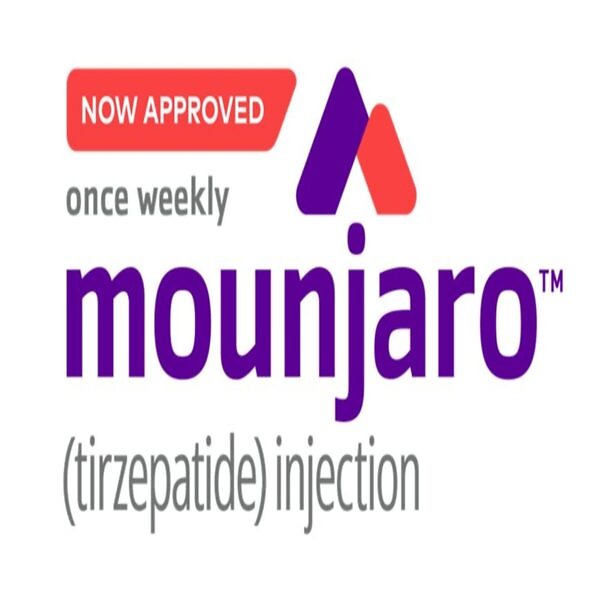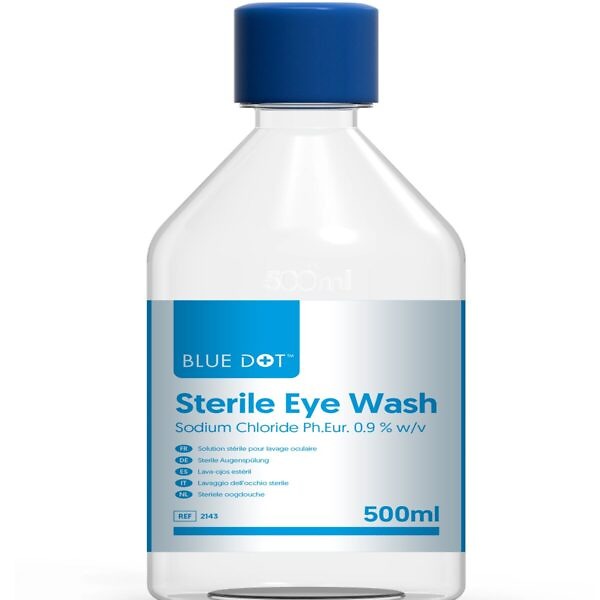Evorel 100 Patches – Estradiol Patches 100mcg
- Relief of the symptoms of the menopause
- Prevent osteoporosis (fragile bones) in women who have had menopause and are most likely to have bone problems.
£12.99
CompareCompare- Relief of the symptoms of the menopause
- Prevent osteoporosis (fragile bones) in women who have had menopause and are most likely to have bone problems.
- Description
- Additional Information
- Brand
- How To Use
- Product Details
- Side Effects
- Ingredients
- How to Store
- Patient Information leaflet
- Reviews (2)
- Questions & Answers
Evorel 100 Patches – Estradiol Patches 100mcg
Are you experiencing the symptoms of menopause? If so, Evorel 100 may be the perfect solution for you. Evorel belongs to a group of medicines called hormone replacement therapy (HRT), and it is specifically designed to help alleviate the symptoms of menopause. These symptoms can include hot flashes, night sweats, vaginal dryness, and mood swings. Evorel 100 can help you get relief from these bothersome symptoms so that you can feel like yourself again. In addition, Evorel 100 can also help prevent osteoporosis, which is a common concern for women during and after menopause. So if you’re looking for an effective and convenient HRT solution, Evorel 100 maybe the answer. Speak to your doctor.
What is menopause?
Women produce oestrogen hormones from their ovaries throughout their adult life. These hormones are important in sexual development and control of the menstrual cycle.
The menopause happens when the level of hormones produced by the ovaries goes down. This is a gradual process. During this time the levels of oestrogen can go up and down. This can cause:
- Hot flushes, night sweats or mood swings
- Vaginal problems such as dryness or itching
- Uncomfortable or painful sexual intercourse
You may get the same symptoms if you have had your ovaries taken out in an operation.
How Evorel works
Evorel patches replace the oestrogen that is normally released by the ovaries. However, in women who still have a womb, taking an oestrogen hormone regularly may cause the lining of your womb to build up and get thicker.
- This means it is necessary to add a progestogen hormone to the oestrogen
- This helps shed the lining of the womb and stop any problems happening
Evorel is not a contraceptive.
Evorel 100 Patches Reviews
After using Evorel 100 Patches, it’s helpful to let others know about your experience. Reviews of an item help other users know that medicines received have helped the condition it is claimed for, how well the treatment worked or any issues to be aware of. We invite our users to leave a review of both their treatment and of the service provided. Click on the reviews tab to see if there has been feedback on this item.
What is the price of Evorel 100 Patches?
The price of Evorel 100 Patches is £6.90
Where can you buy Evorel 100 Patches?
You can buy Evorel 100 Patches at Dock Pharmacy Essex UK, UK Online Pharmacy.
Can you buy Evorel 100 Patches Over the counter?
Evorel 100 Patches is not available to buy over the counter. You need a prescription to buy Evorel 100 Patches
| Brand | |
|---|---|
Brand
EVOREL
How To Use
How To Use
Always use Evorel exactly as your doctor has told you. You should check with your doctor or pharmacist if you are not sure. Evorel patches are available in 4 different sizes: Evorel 25, Evorel 50, Evorel 75 and Evorel 100. These contain different amounts of the oestrogen hormone, estradiol. Your doctor will aim to reduce your symptoms with the lowest possible dose for the shortest amount of time.
The highest dose you should have is 100 micrograms of estradiol in a day. This is the amount delivered by an Evorel 100 patch each day.
When to start using Evorel
You may put an Evorel patch on at any time if:
- You have not used HRT before your menopause and no longer have menstrual periods
- Your menstrual cycles are not regular and you are not pregnant
- You are changing from HRT that does not give you a withdrawal bleed
Put an Evorel patch on within 5 days of the start of bleeding if:
- You are not currently using HRT and still having regular periods
Put an Evorel patch on at the end of a treatment cycle or one week after you finish using another HRT product if:
- You are changing from an HRT medicine that gives you a withdrawal bleed
If you are using another type of HRT:
- The day you start will depend on the type of HRT you have been using
Talk to your doctor if you are not sure which type of HRT you are using.
Using the patches
The patches need to be changed twice a week.
Start a new pack of Evorel as soon as you finish one. Do not leave a break between packs.
Changing your patches
- You must change the patches twice a week to give your body a steady supply of hormones. There is enough hormone in each patch to last for several days
- Change your patch on the same two days every week. This will mean that one patch is on for three days and the next patch for four days
- For example, if you apply your first patch on a Monday, change it on Thursday and again on the following Monday. You can work out your two days from the following table, starting from the first day of use:
If you put your first patch on Monday change on Thursday and change again on Monday.
If you put your first patch on Tuesday change on Friday and change again on Tuesday.
If you put your first patch on Wednesday change on Saturday and change again on Wednesday.
If you put your first patch on Thursday change on Sunday and change again on Thursday.
If you put your first patch on Friday change on Monday and change again on Friday.
If you put your first patch on Saturday change on Tuesday and change again on Saturday.
If you put your first patch on Sunday change on Wednesday and change again on Sunday.
To help you remember your two “patch change” days, mark them here or on the pack.
Where to apply the patch
Stick the patch onto a hairless area of skin below the waist. Most women prefer to wear the patch on the thigh or bottom.
- Do not apply on or near the breasts
- Do not put it on top of cuts, spots or anywhere the skin is irritated
- Do not use cream, moisturiser or talc before applying the patch
- Do not apply the patch on the same area of skin twice in a row
- It can be worn under loose areas of clothing.
- Do not wear a patch under elasticated areas or a tight waistband
- Apply the patch to clean, dry, cool skin as soon as you open the protective pouch
Putting a patch on
Do not use a patch if its protective pouch is already open.
Step 1: Open and Peel
- Using the notches as a guide, tear along two edges of the pouch. Remove the patch
- With the protective backing facing you, bend and peel off half the backing. Don’t touch the sticky side – it may not stick properly
Step 2: Apply and Press
- Apply the open half of the patch to your skin
- Remove the remaining backing and press down the rest of the patch
- Press the patch with the palm of your hand to make sure it is firmly stuck
Removing a patch
- Peel an edge of the patch smoothly away from the skin
- Fold the patch in half, so that the sticky side sticks to itself
- Put it in with the household rubbish, safely out of the reach of children and pets
- Do not flush used patches down the toilet
When you remove the patch some glue may remain on your skin. It will disappear with time, or you can use baby oil to remove it.
If a patch falls off
Apply a new patch but keep to your original ‘patch change’ days. If you have just had a bath or shower, wait until your skin cools before applying a new patch.
Talk to your doctor if you need more patches.
If you forget to change the patch
Change it as soon as you remember and then keep to your original ‘patch change’ days. You may get some bleeding and spotting like a period during this time.
If you use more Evorel than you should
It is unlikely that you will have too much of the hormones in Evorel. The most common symptoms of having too much oestrogen in your body are:
- Tender or painful breasts
- Feeling sick (nausea) or being sick
- Unexpected vaginal bleeding
- Stomach pain or bloating
Removing the patch can reverse the effects of too much oestrogen. Talk to your doctor or pharmacist before using any more patches. Your doctor may decide to change the size of patch.
Contraception while using Evorel
The levels of hormone from the patches are too low to act as a contraceptive. Use non-hormonal contraceptive methods (such as a condom, diaphragm or coil) until your periods have completely stopped.
Everyday activities
- You can have a bath or shower as normal. Do not scrub too hard as this can loosen the edges of the patch
- You can go swimming. The patch will not be affected
- You can exercise and play sports. However, do not wear the patch under tight clothing or waist bands
- You can sunbathe. However, keep the patch covered, out of direct sunlight
If you have any further questions on the use of this product, ask your doctor or pharmacist.
Product Details
Product Information
What you need to know before you use Evorel
Do not use Evorel if:
- You are allergic to anything in the patches (listed in section 7)
- You have (or have ever had) or think you may have breast cancer
- You have (or are suspected of having) or ever had a cancer that is made worse by oestrogens (such as endometrial cancer)
- You have a thickening of the lining of the womb which has not been treated
- You have vaginal bleeding you cannot explain
- You have ever had blood clots in a vein (thrombosis) or a blood clot that has travelled to your lung (pulmonary embolism)
- You have problems with your blood which increases the likelihood of developing a blood clot (thrombosis) (such as protein C, protein S or antithrombin deficiency)
- You have (or have ever had) a liver disease and your liver function tests have not returned to normal
- You have ever had blocked arteries (arterial thrombo-embolic disease) that gave you angina or a heart attack or resulted in a stroke
- You have a blood problem called ‘porphyria’
Do not use this medicine if any of the above applies to you. If you are not sure, talk to your doctor or pharmacist before using Evorel.
Stop using Evorel at once if any of the above appears for the first time and talk to your doctor immediately.
Evorel should not be used by children.
Medical check-ups
Before taking HRT, your doctor should ask about you and your family’s medical history. Your doctor may decide to examine your breasts or your tummy, and may do an internal examination. They will only do this if it is necessary for you, or if you have any special concerns.
Once you have started on HRT, see your doctor for regular check-ups (at least once a year). At these check-ups, your doctor may discuss the benefits and risks of continuing to take HRT.
Make sure that you:
- Go for regular breast screening and cervical smear tests
- Regularly check your breasts for any changes such as dimpling of the skin, changes in the nipple, or any lumps you can see or feel
Tell your doctor if you have ever had any of the following. You may need these checks more often.
- A problem caused by growth of the womb lining
- Inside the womb (fibroids)
- Outside the womb (endometriosis)
- Thickening of the lining of the womb (endometrial hyperplasia)
- Increased risk of blood clots (see ‘Blood clots’ in section 3 below)
- A family history of increased risk of cancers related to oestrogens (see ‘Breast cancer’ in section 3 below)
- High blood pressure (hypertension). Your doctor may tell you to stop using Evorel if your blood pressure goes up
- Diabetes
- Gallstones
- Migraine or severe headaches
- Systemic Lupus Erythematosus (SLE). This is an allergic condition that causes joint pain, skin rashes and fever
- Epilepsy
- Asthma
- A disease affecting the eardrum (otosclerosis)
- Liver, heart or kidney problems
- High levels of fat (triglycerides) in your blood, as you may have a higher risk of pancreatitis (inflammation of the pancreas, which causes severe pain in the abdomen and back)
- Any breast problems
- History of sudden swelling of the face or throat, which may cause difficulty in swallowing or breathing, rapid swelling of the hands and feet and, stomach cramps
You may still be able to use Evorel, but you should discuss this with your doctor first. Also tell your doctor if these illnesses return or get worse while you are using Evorel.
If you have had a premature menopause the risk of using HRT may be different. Talk to your doctor about the risks.
Other conditions
- If you have brown patches on your face or body (chloasma) or have a history of them, you may need to keep out of the sun or away from sunbeds (these patches may not completely disappear again)
Other medicines and Evorel
Tell your doctor or pharmacist if you are taking, have recently taken or might take any other medicines. This includes medicines that you buy without a prescription or herbal medicines.
In particular, tell your doctor or pharmacist if you are taking any of the following:
- Medicines for epilepsy such as phenobarbital, phenytoin or carbamazepine
- Certain medicines for infections such as rifampicin, rifabutin, nevirapine, efavirenz, ritonavir or nelfinavir
- Bosentan – for high blood pressure in the blood vessels of the lungs
- St. John’s Wort – for depression
Taking these medicines with Evorel can stop it from working as well. Because of this you may get some bleeding, like a period, when you are not expecting it.
- A medicine for epilepsy called lamotrigine. Using Evorel with lamotrigine could affect control of your epilepsy
Operations or tests
Tell your doctor if you are going to have surgery. You may need to stop taking HRT about 4 to 6 weeks before the operation to reduce the risk of a blood clot. Your doctor will tell you when you can start taking HRT again.
If you visit a hospital or your family doctor for a blood or urine test, tell them that you are taking Evorel. This is because this medicine may affect the results of the tests.
Pregnancy and breast-feeding
Do not use this medicine if you are pregnant, think you may be pregnant or might become pregnant. This is because it may affect the baby.
If you become pregnant, contact your doctor straight away and remove the patch.
Do not use this medicine if you are breast-feeding.
Ask your doctor or pharmacist for advice before taking any medicine if you are pregnant or breast-feeding.
Driving or using machines
There is no information about whether Evorel affects your ability to drive or use machines. See how this medicine affects you before you drive or use any tools or machines.
3. Safety of HRT
As well as benefits, HRT has some risks. Consider the following when deciding to take or continue HRT.
Heart disease
HRT is not recommended for women who have had heart disease recently. If you have ever had heart disease, talk to your doctor to see if you should be taking HRT.
HRT will not help to prevent heart disease.
Studies of HRT (containing both oestrogen and progestogen) have shown that women may be slightly more likely to get heart disease.
If you get a pain in your chest that spreads to your arm and neck
- See a doctor as soon as possible
- Do not take any more HRT until your doctor says you can
This pain may be a sign of heart disease.
Stroke
Research suggests that HRT slightly increases the risk of having a stroke.
Other things that can increase the risk of stroke include:
- Getting older
- High blood pressure
- Smoking
- Drinking too much alcohol
- An irregular heartbeat
If you are worried about any of these things, or if you have had a stroke in the past, talk to your doctor to see if you should take HRT.
How likely is a stroke?
Looking at women in their 50s, on average, over 5 years:
- In women not taking HRT – 3 in 1000 would be expected to have a stroke
- In women taking HRT – 4 in 1000 would be expected to have a stroke
Looking at women in their 60s, on average, over 5 years:
- In women not taking HRT – 11 in 1000 would be expected to have a stroke
- In women taking HRT – 15 in 1000 would be expected to have a stroke
If you get migraine-type headaches which you cannot explain
- See a doctor as soon as possible
- Do not take any more HRT until your doctor says you can
These headaches may be an early warning sign of a stroke.
Blood clots
HRT may increase the risk of blood clots in the veins (also called deep vein thrombosis, or DVT), especially during the first year of taking it.
These blood clots are not always serious. However, if a clot travels to the lungs, it can cause chest pain, breathlessness, collapse or even death. This is called pulmonary embolism, or PE.
You are more likely to get a blood clot if:
- You are very overweight (BMI above 30 kg/m2)
- You have had a blood clot before
- You are taking medicine containing an oestrogen
- You are getting older
- You have cancer
- You have just had a baby
- Any of your close family have had blood clots
- You have had one or more miscarriages
- You have any blood clotting problem that needs treatment with a medicine such as warfarin
- You are off your feet for a long time because of major surgery, injury or illness
- You are going on a long journey and will not be moving about for some time
- You have a rare illness called SLE (Systemic Lupus Erythematosus)
If any of these things apply to you, talk to your doctor to see if you should take HRT.
How likely is a blood clot?
Looking at women in their 50s, on average, over 5 years:
- In women not taking HRT – 3 in 1000 would be expected to get a blood clot
- In women taking HRT – 7 in 1000 would be expected to get a blood clot
Looking at women in their 60s, on average, over 5 years:
- In women not taking HRT – 8 in 1000 would be expected to get a blood clot
- In women taking HRT – 17 in 1000 would be expected to get a blood clot
If you get painful swelling in your leg, sudden chest pain or have difficulty breathing
- See a doctor as soon as possible
- Do not take any more HRT until your doctor says you can
These may be signs of a blood clot.
Breast cancer
Evidence shows that taking combined oestrogen-progestogen or oestrogen-only hormone replacement therapy (HRT) increases the risk of breast cancer. The extra risk depends on how long you use HRT. The additional risk becomes clear within a 3 years of use. After stopping HRT the extra risk will decrease with time, but the risk may persist for 10 years or more if you have used HRT for more than 5 years.
How likely is breast cancer?
Women aged 50 to 54 who are not taking HRT, on average 13 to 17 in 1000 will be diagnosed with breast cancer over a 5-year period.For women aged 50 who start taking oestrogen-only HRT for 5 years, there will be 16-17 cases in 1000 users (i.e. an extra 0 to 3 cases).
For women aged 50 who start taking oestrogen-progestogen HRT for 5 years, there will be 21 cases in 1000 users (i.e.an extra 4-8 cases).
Women aged 50 to 59 who are not taking HRT, on average, 27 in 1000 will be diagnosed with breast cancer over a 10-year period.
For women aged 50 who start taking oestrogen-only HRT for 10 years, there will be 34 cases in 1000 users (i.e. an extra 7 cases)
For women aged 50 who start taking oestrogen-progestogen HRT for 10 years, there will be 48 cases in 1000 users (i.e. an extra 21 cases).
If you notice any changes in your breast, such as:
- Dimpling of the skin
- Changes in the nipple
- Any lumps you can see or feel
Make an appointment to see your doctor as soon as possible.
Endometrial cancer (cancer of the lining of the womb)
Taking oestrogen-only HRT for a long time can increase the risk of cancer of the lining of the womb (the endometrium). Taking a progestogen as well as the oestrogen helps to lower the extra risk.
If you still have your womb, your doctor will usually prescribe a progestogen as well as oestrogen. These may be prescribed separately, or as a combined HRT product.
If you have had your womb removed (a hysterectomy), your doctor will discuss with you whether you can safely take oestrogen without a progestogen.
If you have had your womb removed because of endometriosis, any endometrium left in your body may be at risk of cancer. This means your doctor may prescribe HRT that includes a progestogen as well as an oestrogen.
Your product, Evorel, is an oestrogen-only HRT.
How likely is endometrial cancer?
Looking at women aged 50 who still have a womb, on average, over the next 15 years:
- In women not taking HRT – 5 in 1000 will get endometrial cancer
- In women taking oestrogen-only HRT, the number will be 2 to 12 times higher, depending on the dose and how long you take it for
The addition of a progestogen to oestrogen-only HRT substantially reduces the risk of endometrial cancer.
If you get breakthrough bleeding or spotting, it is usually nothing to worry about, especially during the first few months of taking HRT.
But if the bleeding or spotting:
- Carries on for more than the first few months
- Starts after you have been on HRT for a while
- Carries on even after you’ve stopped taking HRT
Make an appointment to see your doctor as soon as possible. It could be a sign that your endometrium has become thicker.
Ovarian cancer
Ovarian cancer (cancer of the ovaries) is rare, much rarer than breast cancer. The use of oestrogen-only or combined oestrogen-progestogen HRT has been associated with a slightly increased risk of ovarian cancer.
The risk of ovarian cancer varies with age. For example, in women aged 50 to 54 who are not taking HRT, about 2 women in 2000 will be diagnosed with ovarian cancer over a 5-year period. For women who have been taking HRT for 5 years, there will be about 3 cases per 2000 users (i.e. about 1 extra case).
Dementia
Evorel and medicines like it will not stop memory loss (dementia). Women who start using medicines like Evorel after the age of 65 may have a small increase in the risk of dementia.
Side Effects
Possible side effects
Like all medicines, Evorel can cause side effects, although not everybody gets them. Side effects may happen more often with the larger size patches. Some side effects may be due to any progestogen that is being taken at the same time.
The following diseases are reported more often in women using HRT compared to women not using HRT:
- breast cancer;
- abnormal growth or cancer of the lining of the womb (endometrial hyperplasia or cancer);
- ovarian cancer;
- blood clots in the veins of the legs or lungs (venous thromboembolism);
- heart disease;
- stroke;
- probable memory loss if HRT is started over the age of 65;
For more information about these side effects, see Section 3.
Take off the patch and tell your doctor straight away if you notice or suspect any of the following. You may need urgent medical treatment.
- Sudden swelling of the face or throat which may cause difficulty in swallowing or breathing. This may be a sign of an allergic reaction. This only happens in a small number of people
- Blood clots (thrombosis), a heart attack or stroke
- Yellowing of the skin or whites of the eyes (jaundice), or other liver problems
- Migraine-type headaches for the first time or more frequent (affects less than 1 in 10 people)
- An increase in blood pressure
- Breast or ovarian cancer, endometrial cancer or hyperplasia (long, heavy or irregular vaginal bleeding)
- Convulsions or fits (frequency not known)
Tell your doctor if you notice any of the following side effects while using Evorel:
Very common (affects more than 1 in 10 people)
- Irritated, itchy skin and rash where the patch is applied
Common (affects less than 1 in 10 people)
- Red, puffy skin where the patch is applied
- Breast pain
- Rash or feeling itchy
- Feeling dizzy
- Feeling depressed
- Headache
- Feeling sick or having stomach pains
- Diarrhoea
- Pain, including pain in joints
- Break through bleeding, spotting or periods
- Weight gain
Uncommon (affects less than 1 in 100 people)
- Vaginal thrush
- Wind
- Being aware of your heart beat (palpitations)
- Fuller breasts
- Painful periods
- Swelling of hands and feet (peripheral oedema)
- Water retention or build-up of fluid under the skin (oedema)
- Muscle pain
- Allergic reactions (hypersensitivity)
Rare (affects less than 1 in 1,000 people)
- Bloated feeling
- Gallstones
The following side effects have been reported with other HRTs:
Common (affects less than 1 in 10 people)
- Weight decrease
- Feeling sick
Uncommon (affects less than 1 in100 people)
- Problems with sight
- Indigestion
- Painful reddish skin nodules (erythema nodosum)
- Tender breasts
Rare (affects less than 1 in 1,000 people)
- Feeling anxious
- Increase or loss in sex drive
- Being sick
- Contact lenses may feel uncomfortable
- Excess hair growth
- Acne
- Muscle cramps
- Discharge from the vagina, premenstrual syndrome (PMS)
- Feeling tired
The following side effects have been reported in association with oestrogen/progestogen treatment
- Gall bladder disease
- Brown patches on your face or body (chloasma)
- Rash with target -shaped reddening or sores (erythema multiforme)
- Bruising on the legs
- Loss of memory (Dementia) (see section 3)
Reporting of side effects
If you get any side effects, talk to your doctor, pharmacist or nurse. This includes any possible side effects not listed in this leaflet. You can also report side effects directly via the Yellow Card Scheme at: www.mhra.gov.uk/yellowcard .
By reporting side effects you can help provide more information on the safety of this medicine.
Ingredients
Ingredients
Evorel 100 contains 6.4 mg estradiol and delivers 100 micrograms of estradiol a day
The other ingredients are Duro-Tak 387-2287 (this makes the patches sticky), guar gum and Hostaphan MN19 (backing film).
How to Store
How to Store
Keep this medicine out of the sight and reach of children. Do not store above 25°C. Keep in the original pouch and carton.
Do not use Evorel after the expiry date which is stated on the label. The expiry date refers to the last day of that month.
Do not use a patch if the protective pouch is already open.
Patient Information leaflet
Click here for the Patient Information leaflet
Please read before using the product
Only logged in customers who have purchased this product may leave a review.
Questions and answers of the customers
There are no questions yet, be the first to ask something for this product.
Other Products From This Seller
- Validated for 2-8°C for 30 to 36 hrs*
- Perfect for long-haul flights
- Carries pens, bottles, vials and syringes
- Manufactured from excellent quality materials
£102.50
- Availability: in stock
- Validated for 2-8°C for 18 to 24hrs*
- Perfect for long haul flights
- Carries pens, bottles, vials and syringes
- Integrated digital thermometer
- Manufactured from excellent quality materials
£69.45
- Availability: in stock
- Validated for 2-8°C for 15 to 20hrs*
- Perfect for long haul flights
- Carries pens, bottles, vials and syringes
- Integrated digital thermometer
- Manufactured from excellent quality materials
£54.50
- Availability: in stock
Steglatro Tablets – Ertugliflozin Tablets available in 2 strengths:
- Steglatro 5mg Tablets – Ertugliflozin 5mg Tablets
- Steglatro 15mg Tablets – Ertugliflozin 15mg Tablets
£49.50
- Availability: in stock
Original price was: £43.20.£39.50Current price is: £39.50.
Ursodeoxycholic Acid Tablets 250mg – Cholurso Tablets, 60 Tablets Introducing Cholurso Tablets the brand name of Ursodeoxycholic Acid Tablets 250mg – Your Solution for Gallstone Management and Liver Health Ursodeoxycholic Acid 250mg Tablets is a cutting-edge pharmaceutical formulation designed to positively influence bile composition, making it a versatile solution for various health concerns. Ursodeoxycholic Acid, […]
Learn MoreOriginal price was: £43.20.£39.50Current price is: £39.50.
- Availability: in stock
£156.00 – £210.00
Please note you need insulin pen needles to use Mounjaro Injection
Mounjaro Injection – Tirzepatide Injection, 4 Pre-filled Pens
Available in 6 strengths:
- Mounjaro 2.5mg Injection
- Mounjaro 5mg Injection
- Mounjaro 7.5mg Injection
- Mounjaro 10mg Injection
- Mounjaro 12.5mg Injection
- Mounjaro 15mg Injection
Learn More
£156.00 – £210.00
- Availability: in stock
Timoptol LA Gel – Timolol Eye Gel is available in 2 strengths
- Timoptol LA 0.5% Gel
- Timoptol LA 0.25% Gel
£7.50
- Availability: in stock
Original price was: £43.50.£39.75Current price is: £39.75.
One-Alpha Drops 2mcg/1ml – Alfacalcidol Drops 2mcg/1ml
Learn MoreOriginal price was: £43.50.£39.75Current price is: £39.75.
- Availability: in stock
Original price was: £5.99.£5.39Current price is: £5.39.
Ideal for irrigating and cleansing the eye, or a wound
Learn MoreOriginal price was: £5.99.£5.39Current price is: £5.39.
- Availability: in stock
Ultimate Surefit Erection Ring Set 15222 – Constrictor Rings For Erectile Dysfunction Experience Confidence and Pleasure with the Ultimate Surefit maintenance ring set – Your Key to Intimate Well-being Introducing the Ultimate Surefit Erection Ring, a premium solution meticulously designed for those seeking to overcome the challenges of erectile dysfunction. Crafted with precision and comfort […]
Learn More£58.50
- Availability: in stock


















2 reviews for Evorel 100 Patches – Estradiol Patches 100mcg
Anonymous (verified owner) –
Yvette (verified owner) –
Excellent price – quickly recieved
Julie Cutbush –
Thank you for this positive feedback! We are glad to hear that you were happy with the service!